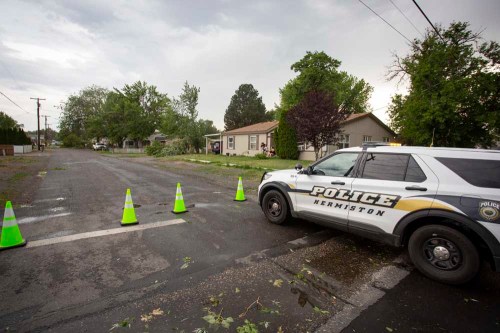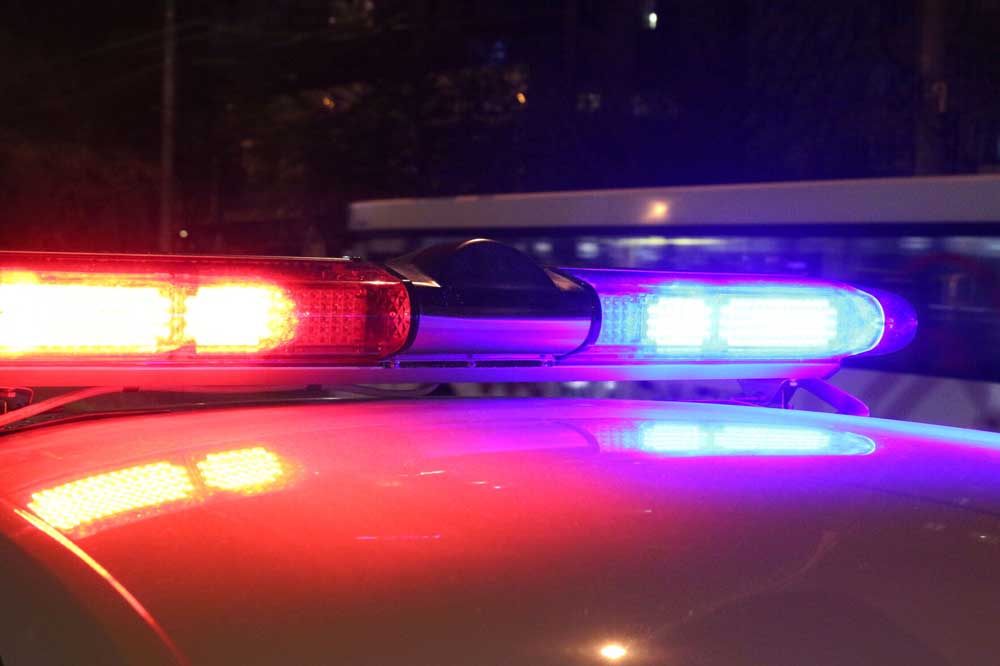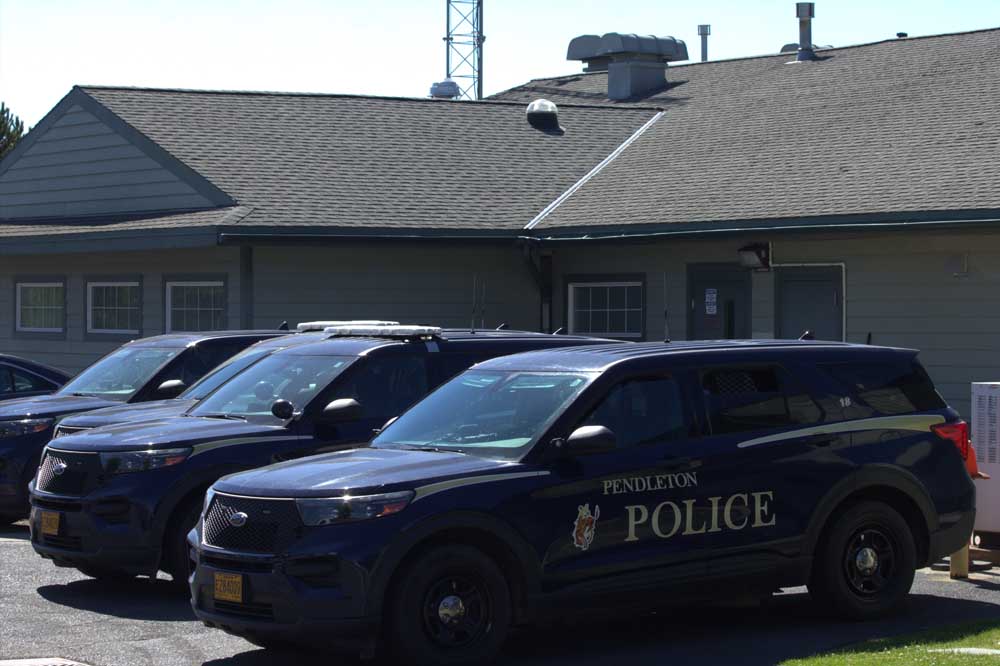Hermiston City Council adopts budget amid calls nationwide to ‘defund the police’
Published 9:00 am Tuesday, June 9, 2020

- A Hermiston Police car blocks access to Southeast Fifth Street in Hermiston due to downed power lines on Saturday, May 30, 2020.
HERMISTON — The Hermiston City Council adopted a new budget for 2020-21 on Monday, June 8.
The budget’s biggest capital improvement projects for the year are water and wastewater improvements, including replacing wastewater pipes along Newport Avenue and water mains along Ridgeway Avenue. The city also plans to rebuild Funland Playground at Butte Park after it burned down in 2019, and finish design work for a restructuring of the three-way intersection of Geer, Harper and River roads.
Trending
The original plan had been to give city staff a 2.75% cost of living increase in July, but reduced revenue because of the pandemic has pushed that raise out until at least January 2021.
The budget passed without debate between councilors, but Mayor David Drotzmann said he hoped community members watching knew that the budget had been discussed in depth previously at a budget committee meeting that included multiple councilors and members of the public.
“We’re very familiar with this budget,” he said.
At a time when many major metropolitan areas are discussing calls by the Black Lives Matter movement to “defund the police” by diverting more funding away from police departments and into social services, Hermiston’s police budget added two positions. A new school resource officer, paid 75% by Hermiston School District, will be assigned to the middle schools, and a new records clerk will help the department process increased requests for body camera footage and other records.
At the end of the city council meeting, as councilors discussed recent protests in Hermiston, Drotzmann said he felt the Hermiston Police Department’s work was essential to the community.
“We need you; we value you,” he said.
Trending
He also said he was proud of Hermistonians for making their voices heard through protest, and that they did so without resorting to personal violence or destruction of property.
City councilor Lori Davis said she had a constituent who asked her to bring up the Hermiston Freedom Rally, which took place May 30 in protest against COVID-19 restrictions. She said the constituent felt frightened and disturbed by the people who showed up carrying “assault rifles,” with their faces covered, and that the image “didn’t represent Hermiston.”
Drotzmann said he got several calls and emails from people who were also concerned about that rally and wanted the city to not allow it to take place. The group rented the downtown festival street from the city.
“When we start silencing one group, who gets to make that decision, and when does it stop?” Drotzmann asked.
City councilor Roy Barron also said he had heard concerns, particularly regarding the perception that speakers for the rally were “bringing white supremacy to town,” but like Drotzmann, he didn’t want to infringe on others’ right to free speech.
He said he attended the Black Lives Matter protest on June 6 and he understood that the anger motivating such protests around the world are an expression of pain that the black community is feeling. He encouraged everyone to work together to root out systemic racism.
He also said he thought Hermiston has a great police department, but they shouldn’t have to be the ones handling so much of the mental health and addiction problems in the community. He said he wanted to see more help for them in those areas, more training to equip them to handle those situations and protocols to make sure officers are taking care of their own mental health so that they can deal with high-stress situations.
“I would encourage people to engage with our police department,” Barron said.
Monday’s regular meeting was preceded by an hourlong work session to discuss possible changes to Hermiston’s zoning rules to accommodate a proposed homeless shelter.
The shelter, proposed by a new local nonprofit known as Stepping Stones, would be comprised of at least 20 Conestoga huts 6 feet by 10 feet wide on a lot behind the Agape House. The huts, which would have no running water or electricity, would each offer a homeless individual, couple or a parent and child a place to sleep in exchange for fulfilling steps, such as volunteer work or applying for jobs to help them move out of homelessness. The lot would also include a common building where guests could socialize and charge their cellphones.
Guests would only be allowed on the property in the evenings to sleep and would be supervised by a paid security guard and cameras. They would be required to follow rules, such as passing a cleaning inspection each morning and not leaving the property again once they arrived for the night.
During the meeting, city planner Clint Spencer proposed new rules to allow “temporary emergency shelters” in light industrial zones. The rules included provisions, such as surrounding the property with an 8-foot, chain-link fence with privacy slats, providing adequate lighting and providing one permanent toilet per 10 residents.
Those rules will be discussed at the next planning commission meeting before going to a public hearing sometime in July.









